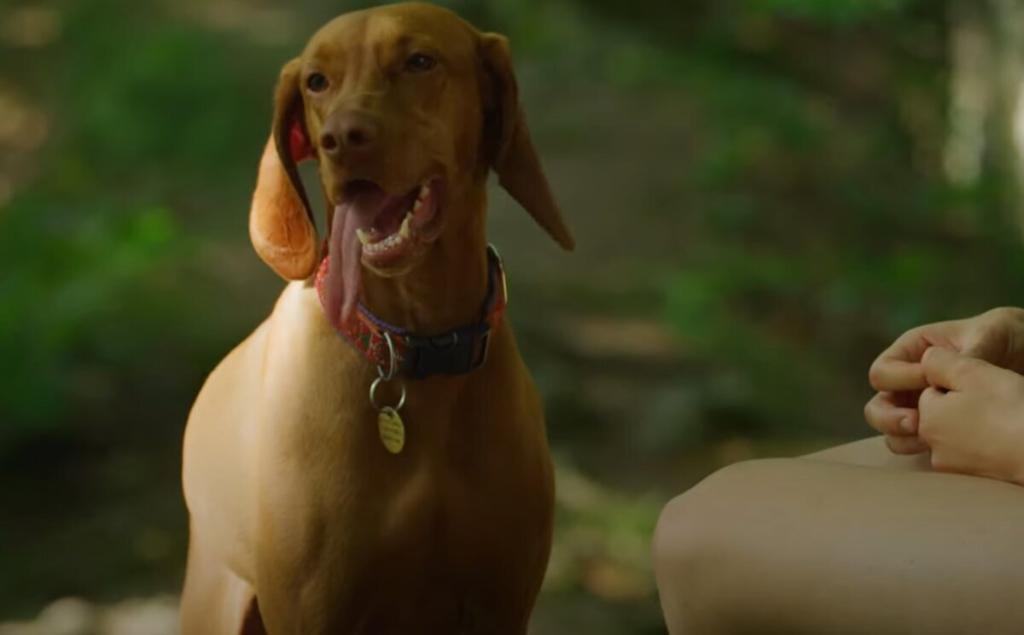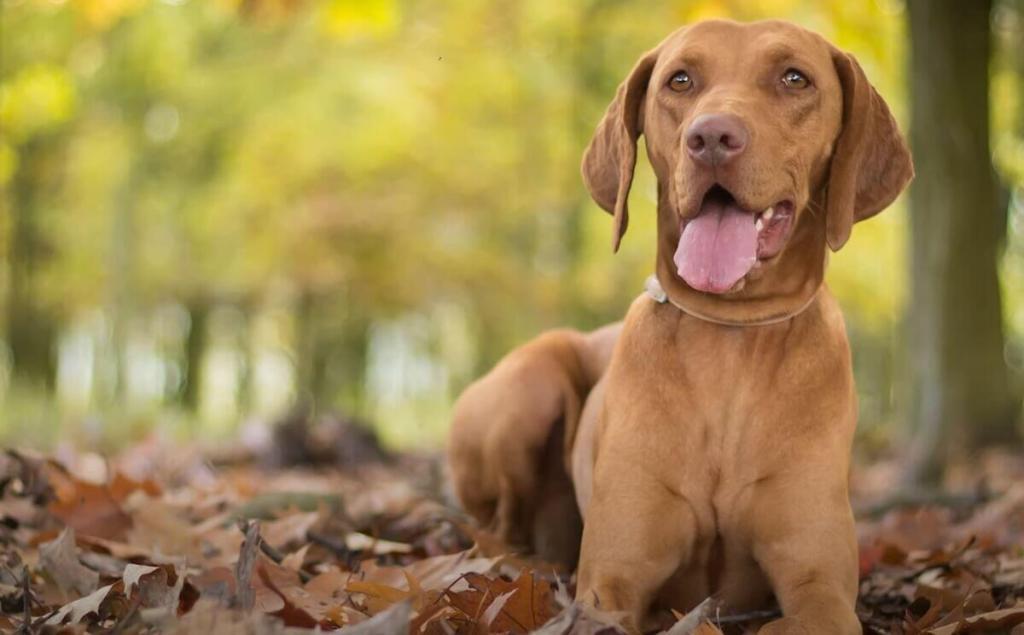As you stand in a golden field, you might find the Vizsla, with its rich russet coat, to embody autumn itself—a beautiful and eager creature. This Hungarian Pointer’s traits and temperament have undoubtedly piqued your interest, as they represent a blend of friendliness and athleticism that could be the perfect match for your lifestyle.
Known for their intelligence and emotive expressions, you’ll find Vizslas are more than just hunting companions; they’re loyal friends who demand an active role in the family. However, before you consider bringing one into your home, it’s crucial to understand the nuances of their nature. Will their boundless energy and need for companionship dovetail with your daily routine, or will it pose a challenge you’re unprepared to meet?
As we explore the layers of their character, consider how a Vizsla might fit into your life’s tapestry.
- Noise Level
- Energy
- Sociability
- Trainability
- Care
- Health
Overall
Summary
The Vizsla breed is known for being moderately noisy, highly energetic, sociable, easily trainable, requiring moderate care, and generally healthy.
Vizsla: Traits, Temperament, and Care Guide
The Vizsla, characterized by its medium size and golden rust coat, exhibits lively and affectionate personality traits that demand attentive care and thorough socialization for optimal well-being. As a Hungarian Pointer, this breed possesses a temperament that thrives on close family ties, making it an excellent family dog. However, it is susceptible to separation anxiety if left alone for extended periods.
Rigorous exercise is non-negotiable, requiring at least two half-hour workouts daily to mitigate potential health problems like hip dysplasia. Early socialization and consistent, kind training are pivotal in cultivating a Vizsla’s friendly nature. Without this, the breed may develop undesirable behaviors.
Regular health screenings for hips, thyroid, and eyes are crucial to address genetic predispositions preemptively. Your commitment to their care ensures a robust, contented companion.
Exploring the Characteristics of the Vizsla
Delving into the characteristics of Vizslas reveals a breed with a robust affinity for human companionship, necessitating an active lifestyle and consistent interaction to maintain their mental and physical health.
| Trait | Description |
|---|---|
| Temperament | Affectionate, gentle, lively |
| Energy Levels | High, requiring substantial exercise |
| Hunting Skills | Keen senses, natural at pointing and retrieving |
| Companionship | Known as “Velcro dogs” for their attachment to owners |
| Health Considerations | Prone to certain conditions; health clearances vital |
As an esteemed Hungarian pointer, the Vizsla is a talented hunting dog with pronounced keen senses, making it adept in pointing and retrieving. These active dogs thrive on engagement and are celebrated for their high energy levels. While Vizslas are typically healthy, vigilance for specific health issues is paramount. Their temperament as affectionate “Velcro dogs” underscores their need for belonging and integration within family life.
Vizsla: A Comprehensive Profile and Guide
As you consider adding a Vizsla to your family, it’s crucial to understand their comprehensive profile, which encompasses behavior, care, and health. Research indicates that Vizslas thrive in environments with ample physical exercise and mental engagement, aligning with their historical breeding for hunting and stamina.
Your approach to their training and socialization must be consistent and positive to ensure that their natural intelligence and affectionate nature are nurtured effectively.
Everything You Need to Know
Understanding the Vizsla dog breed requires a comprehensive look at its distinct traits, health considerations, and care needs. This ensures prospective owners are well-informed about the responsibilities and joys of living with this lively Hungarian companion.
As you consider bringing a Vizsla into your home, it’s crucial to recognize these key aspects:
- Traits: Vizslas are affectionate, intelligent, and possess a high energy level, necessitating regular physical and mental stimulation.
- Temperament: They thrive on human companionship and need lots of time with their family to remain happy.
- Health: Potential health issues include hip dysplasia and epilepsy; responsible breeding and health clearances are essential.
- Exercise: Originally bred for hunting, Vizslas require ample exercise to maintain their well-being.
- Mental Stimulation: Lack of mental engagement can lead to boredom and destructive behavior, highlighting the need for interactive play and training.

Discovering the Temperament
When exploring the temperament of the Vizsla, it’s clear that their lively and gentle nature requires consistent engagement through training and exercise to prevent the onset of destructive behaviors. Vizslas need a lot of positive reinforcement to harness their boundless energy productively.
As good watchdogs, they form strong bonds and may exhibit Velcro Vizsla traits, reflecting their need to spend time close to their humans.
Their temperament, characterized by an affectionate demeanor and a propensity to learn, demands a stimulating environment to mitigate issues related to anxiety and boredom. Despite their independent streak, they’re receptive to training, which should leverage their above-average learning ability.
Without proper activity and companionship, these dogs are prone to certain health and behavioral problems, affirming that the breed looked much different when not adequately cared for.
Vizsla: Is It a Good Fit for Families?
When considering a Vizsla as a family pet, you must evaluate their high energy levels and exercise needs against your family’s lifestyle.
Their strong social inclinations and affinity for children suggest they can integrate well into a family dynamic, provided the environment is active and engaging.
However, their requirement for close human companionship necessitates a commitment to provide consistent interaction and presence.
Assessing Vizsla’s Compatibility with Families and Kids
Often, Vizslas emerge as an ideal match for families and kids, thanks to their affectionate and energetic nature that aligns well with active household dynamics. These Hungarian pointers are known for their traits that foster strong bonds with family members. However, an analytical look at their temperament suggests that certain considerations should be made:
- Gentle with older children who can match their energy levels
- Require consistent, kind training, beneficial for teaching responsibility to kids
- Not recommended for families with very young children due to exuberance
- Respond well to active lifestyles, ideal for outdoor-loving families
- May not suit first-time dog owners without commitment to exercise and training
When considering a Vizsla, analyze your family’s lifestyle to ensure compatibility with this vibrant breed.
Vizsla Adaptation Skills
While Vizslas may seem like high-energy dogs unsuited for small spaces, their polite behavior, moderate size, and manageable energy levels when given proper exercise evidence their ability to adapt well to apartment living.
The Vizsla Club of America highlights the necessity of consistent dog training to maintain a happy and healthy lifestyle for this breed, mainly when confined to apartment living. Vizslas love companionship and can become bored if left alone for extended periods, underscoring the importance of engagement and activity level for their adaptation.
Regular exercise—ideally two hours daily—ensures that the Hungarian Vizsla remains well-mannered and content in smaller living spaces. Through proper socialization and training, Vizslas exhibit remarkable adaptation skills, needing a lot of interaction to thrive in various environments.
Vizsla Obedience Essentials
You’ll find that Vizslas responds well to consistent and humane training strategies.
Studies show that early socialization plays a critical role in the obedience of this breed, emphasizing the need for exposure to various environments and stimuli.
To maintain focus and discipline, ensure your Vizsla receives sufficient daily exercise, which correlates with their ability to obey commands.
Effective Training Strategies
To effectively train a Vizsla, it’s essential to implement a strategy that emphasizes positive reinforcement, ensuring the dog associates obedience with rewards such as treats and praise. Consistency in training your Vizsla underpins their ability to learn and internalize commands. By understanding the Vizsla dog, a breed bred to hunt and often engaged in canine sports, you can tailor activities that keep them mentally stimulated and physically close to the hunter.
Here’s a table to summarize key strategies:
| Key Aspect | Strategy | Purpose |
|---|---|---|
| Positive Reinforcement | Treats, Praise | Motivate and Encourage Learning |
| Consistency | Regular Routines, Clear Rules | Establish Expectations and Boundaries |
| Mental Stimulation | Problem-Solving Activities, Canine Sports | Prevent Boredom, Engage Intelligence |
| Socialization | Exposure to Various Settings, People, and Animals | Develop Well-Rounded Behavior |
| Exercise | Regular, Vigorous Activity | Channel Energy, Prevent Hip Dysplasia |
Each aspect caters to the dog’s needs, fostering a sense of belonging within its human and canine communities.

Exercise and Grooming Needs
Vizslas demand a rigorous exercise regimen, necessitating at least two half-hour physical activity sessions daily to ensure their well-being and contentment. As a breed developed to point and retrieve, these Hungarian pointers thrive on vigorous exercise. You’ll need lots of time to keep them happy and prevent restlessness. Without enough exercise, they may develop behavioral issues.
Grooming needs, though less demanding, are still vital. Their short and smooth coats require regular brushing and the occasional wipe-down with a damp cloth to stay clean and shiny. Remember to assess their body condition frequently, adjusting feeding amounts to maintain a healthy weight. Quality dog food, around 3 to 4 cups daily split into two meals, is essential to keep your vizsla healthy and happy.
Health Considerations
Considering a Vizsla’s health, it’s important to recognize their susceptibility to specific conditions affecting their lifespan. Research indicates that proactive health monitoring for ailments such as hip dysplasia and epilepsy is crucial in mitigating their impact on your dog’s quality of life.
Ensuring health clearances and selecting a breeder with transparent health records are fundamental to fostering a robust Vizsla.
Common Health Issues and Lifespan
While typically enjoying a lifespan of 10-14 years, Vizslas are susceptible to certain health conditions, such as epilepsy, hip dysplasia, and hypothyroidism, necessitating proactive health management. As a Vizsla owner, you’re part of a community that values the well-being of this American Kennel Club-recognized breed.
To support your Hungarian pointer’s vitality, it’s crucial to ensure regular health clearances for the hips, thyroid, and eyes. Feeding your dog a balanced diet and monitoring for weight gain can prevent additional stress on its joints. Exercise is imperative; two half-hour sessions daily can bolster health and deepen your bond.
Is Vizsla the Right Dog for You?
Determining whether a Vizsla aligns with your lifestyle requires an analysis of your daily routine and commitment to high-energy pet care. If you’re considering a Vizsla, know they aren’t merely large breeds; they’re Hungarian pointers requiring extensive daily exercise—ideally two hours. Suited to Apartment living only if their high activity needs are met, Vizslas are perfect companions for those who revel in outdoor pursuits like running and hiking.
Their propensity to develop separation anxiety means a Vizsla mightn’t be a good idea if your home is often empty. Regular grooming and health maintenance are essential, as Vizslas need to stay clean and are prone to barking. Adopting from a shelter or rescue requires lots of time for training and socialization.
Alternatives for Vizsla: Active and Affectionate Sporting Breeds
For those who adore the Vizsla’s active nature and affection, these sporting breeds offer a similar blend of athleticism and warmth.
| Similar Dogs | Short Description |
|---|---|
| Weimaraner | Distinguished by its grey coat, known for stamina and friendly demeanor. |
| German Shorthaired Pointer | Versatile in hunting, known for its friendly, eager-to-please nature. |
| English Setter | Elegant and gentle, ideal for families and various outdoor activities. |
| Brittany | Energetic and agile, perfect for hunting and as a family pet. |
| Pointer | Athletic and alert, excellent in various field sports. |
Conclusion
The Vizsla is a radiant companion, a true ‘golden child’ among canines with its vibrant rust-hued coat and dynamic spirit. Tailored for the active soul, this breed thrives on hearty exercise and intellectual play.
Yet, don’t overlook their need for a structured, nurturing environment; Vizsla’s well-being hinges on this balance. Careful consideration of their traits ensures that bringing a Vizsla into your life isn’t just a choice, but a fitting match for your lifestyle.
